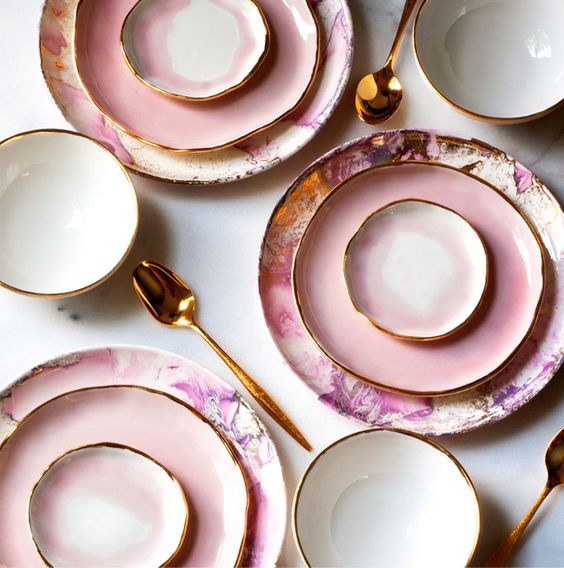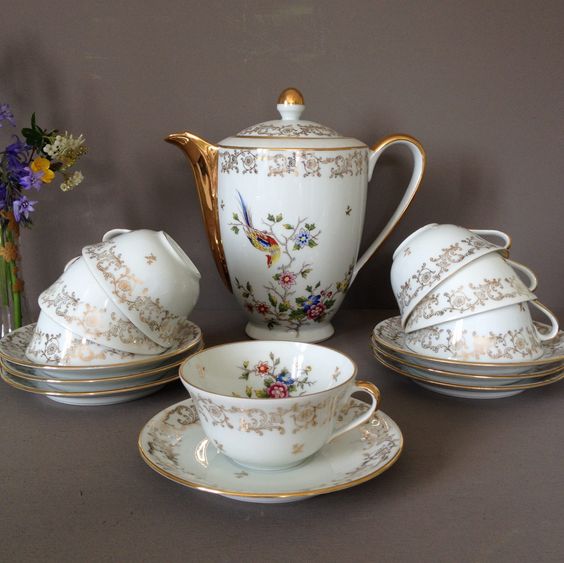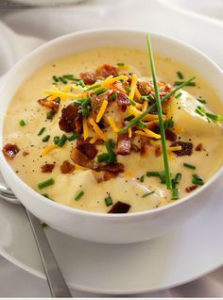The two types of dinnerware that consumers will stumble upon most often include porcelain and stoneware. These two are very exceptional yet looks stunning and can be used for decades. While choosing some of the special sorts of dinnerware, it is critical to apprehend what makes each unique, consisting of both the pros and cons of each item. Before deciding on the form of dinnerware that you will purchase for your private home, it is best to recognize the variations so that you could make a nicely-informed decision.
More...
Stoneware or Porcelain: The Difference Between the Two
The primary distinction between stoneware and porcelain is that stoneware dinnerware has one most effective firing method at the same temperature. A distinctive form of clay is also used in stoneware. Any other essential difference among porcelain and stoneware is that stoneware could come in blue, not only in white. You can also see shades of rich, satin or matte, in addition to other designs.
Stoneware is made from “high-fired” clay, making it a great deal more potent. It is fired at approximately 2185°F and becomes vitreous. This means it has the nature of glass. After firing it turns into robust and chip-resistant.
Porcelain is designed from some of the materials. Light clay like China White is the first fabric which is refined known as kaolin clay. Different substances consisting of feldspar, granite, and glass are pulverized and mixed with the clay. The product is enkindled in a bisque kiln at a moderate temperature once sufficient water is brought to make the aggregate attainable. A glazing and an "excessive-temperature" firing is the next process. The clay for porcelain is likewise fired at extra than 2300°F. Once fired, it's far blanketed with a clear glaze that helps the white color show extra prominently. A delicate and translucent chunk of pottery will come out as a result.
Stoneware differs from porcelain in lots of approaches.These variations include:
- Color
- Firing technique
- Tough and durable but less delicate and refined
- Porous and opaque
- Heavier than the others
- Can have different colors and finishes
Warming and Baking Variations
Consider how the dinnerware will be used. If it is meant for everyday use at meals or to warmness up leftovers, stoneware could be the most suitable preference. If the dinnerware is supposed for use for unique gatherings or on special occasions, consider porcelain for its design and sensitivity. While other dinnerware is not meant to be warmed and used for baking, stoneware and porcelain can be used to cook or to bake food. However, there are also limitations for this. For both dinnerware, there is no need to adjust the temperature.
The oven temperature should at small about 225°F for 10 minutes before placing the dinnerware inside. After that, you can slowly increase the temperature.You no longer need to use wet cloths when holding the hot dishes. However, it is recommended to let the hot dish cool first before washing or rinsing. Both types should not be kept under direct sunlight or on right warm areas. These also allow you to use for microwaving, depending on the manufacturer's’ guidelines. The only difference is porcelain dinnerware with metal rim cannot be microwaved. Due to porcelain and stoneware can be used in ovens and microwaves, they are taken into consideration as versatile products.
Once you have decided to eventually choose to buy a properly-coordinated ceramic dinner set that fits your character, simply know your desires. Your new dinnerware set must be reliable and durable. So, it’s essential to select which you are going to buy, according to your preference. To help you determine, we’ve narrowed down the first variations in ceramics between two of the most popular types of fabric: porcelain and stoneware.
Porcelain
Porcelain pottery was hailed from China as a lovely addition to any dinner table. It’s far built of high-quality clay substances and fired at extraordinarily excessive temperatures ensuing in a pitcher-like appearance. Because of the clay’s fine texture, pieces can be made very thin resulting in a generally transparent surface; however, this system additionally leaves those dishes specially vulnerable to chips and breakage. Although porcelain is typically built of fine kaolin clay, it has additionally been recognized to be made with flour animal bone coining the term “bone china”. It may be much less durable than stoneware, but its beauty regularly outweighs this reality.
The porcelain is used together with many styles of ceramics inclusive of some stoneware, even though the two are not always the equal. The largest distinction, aside from the original texture of the clay fabric used daily is the way in which each of those products is made. While stoneware is fired and vitrified best once, porcelain is going via the process two times, therefore, making it harder and less porous. Porcelain is quite more expensive than the stoneware. However, exclusive designs and finishes can also make a difference.
Porcelain is normally lighter in weight and thinner and has a delicate appearance. This type of dinnerware is commonly reserved for fancy dinners or events, however, can be used for daily usage. Porcelain is now typically unpainted or in any other case marked via another color as the initial appeal is the white color. Extra advantages of porcelain include its vivid white color, unlike the gray or tan color of stoneware, which produces brighter colorings. It is capable of facing up to thermal surprise or the tendency of items to break or grow to be brittle while problem to high-temperature changes.
Stoneware
Stoneware is made of an expansion of clay, stone, and flint, making the appearance and texture of each piece unique. At times, it is made with the addition of coarse salt in the kiln which gives it a rough look, but it could also resemble the smooth surface of porcelain. Not like porcelain which may be difficult to breed based on its unique composition, stoneware does not require different substances to bring out its splendor and increase its energy. Stoneware is prized for its sturdiness and simple manufacturing.
Stoneware undergoes single firing method, ensuring in warmer, extra natural colorings. This makes it clear to distinguish the 2 notwithstanding a comparable-looking completed product. Absolutely turn the piece over to study the color of the bottom. If it is vibrant white, that’s porcelain, and if it's far darker and murkier in tone, it's stoneware. Extra benefits of stoneware consist of its top-notch durability, resistance to scratches and stains, and ease of cleaning.
Like porcelain, it could face up to thermal shock because of this that it could move instantly from the refrigerator to the oven and again without cracking. Selecting the proper set of dishes ought not to be difficult, but it needs to contain a terrific quantity of studies. Make sure you pick out the first-class ceramic dishware set to your family by weighing all your options which include the benefits and drawbacks of stoneware and porcelain.
Scaling Your Choice
Once you've decided what sort of dinnerware you are buying, whether or not it is porcelain or stoneware, it'll then be time to require a sample. This could seem overwhelming as there are literally loads of patterns from which to pick out. For most of the people, selecting the sample is the most time ingesting component of purchasing dinnerware. But, it’s something that should be taken into consideration with the real notion.
It is constantly excellent to take into account how the dinnerware can be used earlier than buying. Thus, it’s advisable to go over the products before making a purchase.Since you and your family will be using each day for a long time. It’s far worth a bit more essential to pick out something you'll revel in for years, which could also be passed onto the succeeding generations.
















